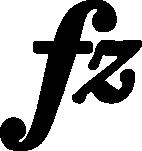



|
b. 179
|
composition: Op. 12, Variations in B♭ major
..
In FE (→GE) we can see here "zf", which we change to the correct category imprint: Interpretations within context; Differences between sources issues: EE revisions , Inaccuracies in GE , Inaccuracies in FE |
||||||||||
|
b. 179
|
composition: Op. 12, Variations in B♭ major category imprint: Interpretations within context; Differences between sources issues: EE revisions , Errors in FE , Accidentals in different octaves , GE revisions |
||||||||||
|
b. 179
|
composition: Op. 12, Variations in B♭ major
..
It seems that the aim of the EE reviser's intervention could have been the standardisation of marks in both parts of hands – the L.H. chord is provided with a dot, as the preceding ones, which makes this mark more reliable than the single wedge in the R.H. in this fragment. However, in the main text we keep the FE markings, as the use of different marks in the parts of both hands can be easily explained by the textural context – the L.H. chord continues the current course, while the R.H. octave does not. category imprint: Differences between sources issues: EE revisions , Errors in GE , Wedges |
||||||||||
|
b. 180
|
composition: Op. 12, Variations in B♭ major
..
In the main text we include the cautionary category imprint: Differences between sources; Editorial revisions issues: GE revisions |
||||||||||
|
b. 181
|
composition: Op. 12, Variations in B♭ major
..
In the main text we omit the cautionary category imprint: Editorial revisions issues: Cautionary accidentals |

 in
in  in
in  raising c4 to c
raising c4 to c 4 was overlooked, which was noticed and supplemented both in
4 was overlooked, which was noticed and supplemented both in  to f3, added in
to f3, added in